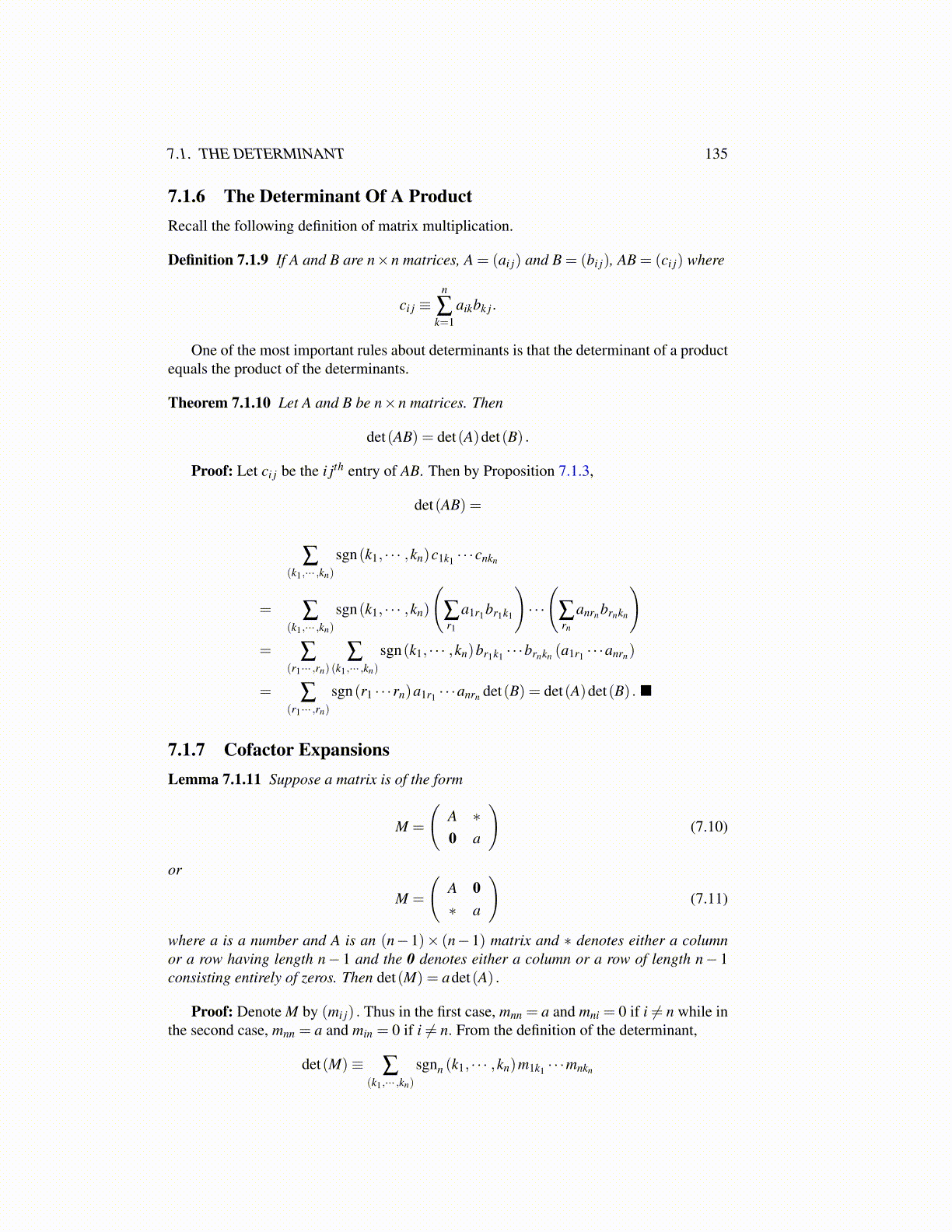
7.1. THE DETERMINANT 135
7.1.6 The Determinant Of A ProductRecall the following definition of matrix multiplication.
Definition 7.1.9 If A and B are n×n matrices, A = (ai j) and B = (bi j), AB = (ci j) where
ci j ≡n
∑k=1
aikbk j.
One of the most important rules about determinants is that the determinant of a productequals the product of the determinants.
Theorem 7.1.10 Let A and B be n×n matrices. Then
det(AB) = det(A)det(B) .
Proof: Let ci j be the i jth entry of AB. Then by Proposition 7.1.3,
det(AB) =
∑(k1,··· ,kn)
sgn(k1, · · · ,kn)c1k1 · · ·cnkn
= ∑(k1,··· ,kn)
sgn(k1, · · · ,kn)
(∑r1
a1r1br1k1
)· · ·
(∑rn
anrnbrnkn
)= ∑
(r1··· ,rn)∑
(k1,··· ,kn)
sgn(k1, · · · ,kn)br1k1 · · ·brnkn (a1r1 · · ·anrn)
= ∑(r1··· ,rn)
sgn(r1 · · ·rn)a1r1 · · ·anrn det(B) = det(A)det(B) . ■
7.1.7 Cofactor ExpansionsLemma 7.1.11 Suppose a matrix is of the form
M =
(A ∗0 a
)(7.10)
or
M =
(A 0∗ a
)(7.11)
where a is a number and A is an (n−1)× (n−1) matrix and ∗ denotes either a columnor a row having length n− 1 and the 0 denotes either a column or a row of length n− 1consisting entirely of zeros. Then det(M) = adet(A) .
Proof: Denote M by (mi j) . Thus in the first case, mnn = a and mni = 0 if i ̸= n while inthe second case, mnn = a and min = 0 if i ̸= n. From the definition of the determinant,
det(M)≡ ∑(k1,··· ,kn)
sgnn (k1, · · · ,kn)m1k1 · · ·mnkn